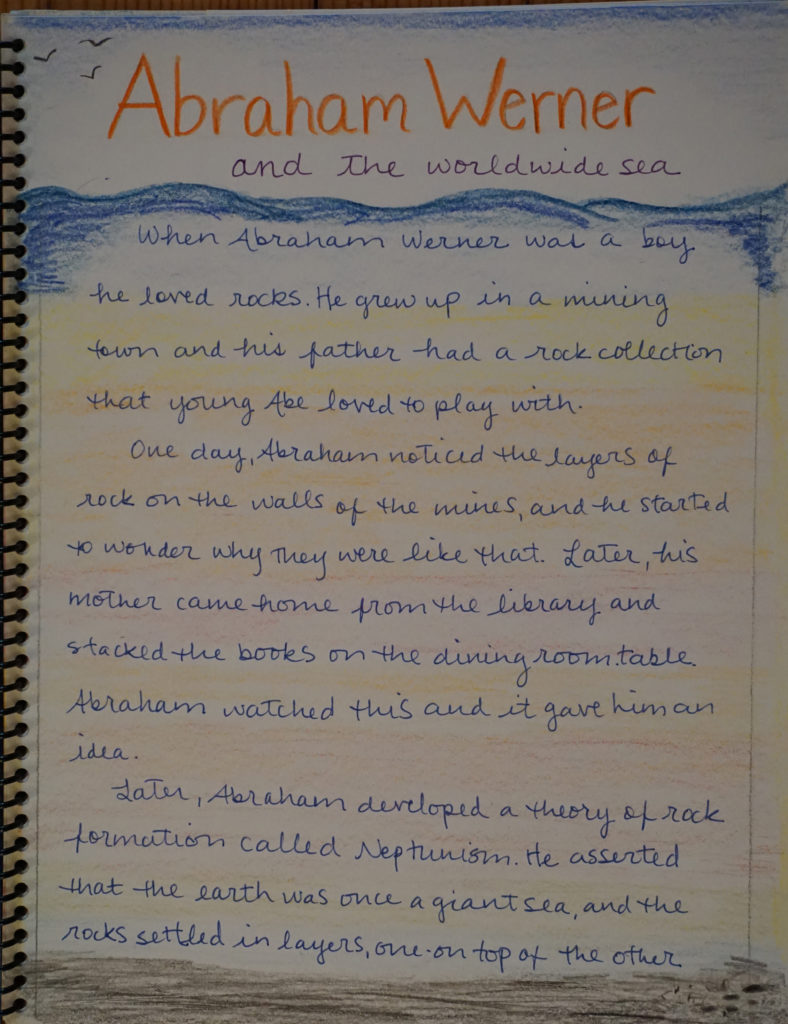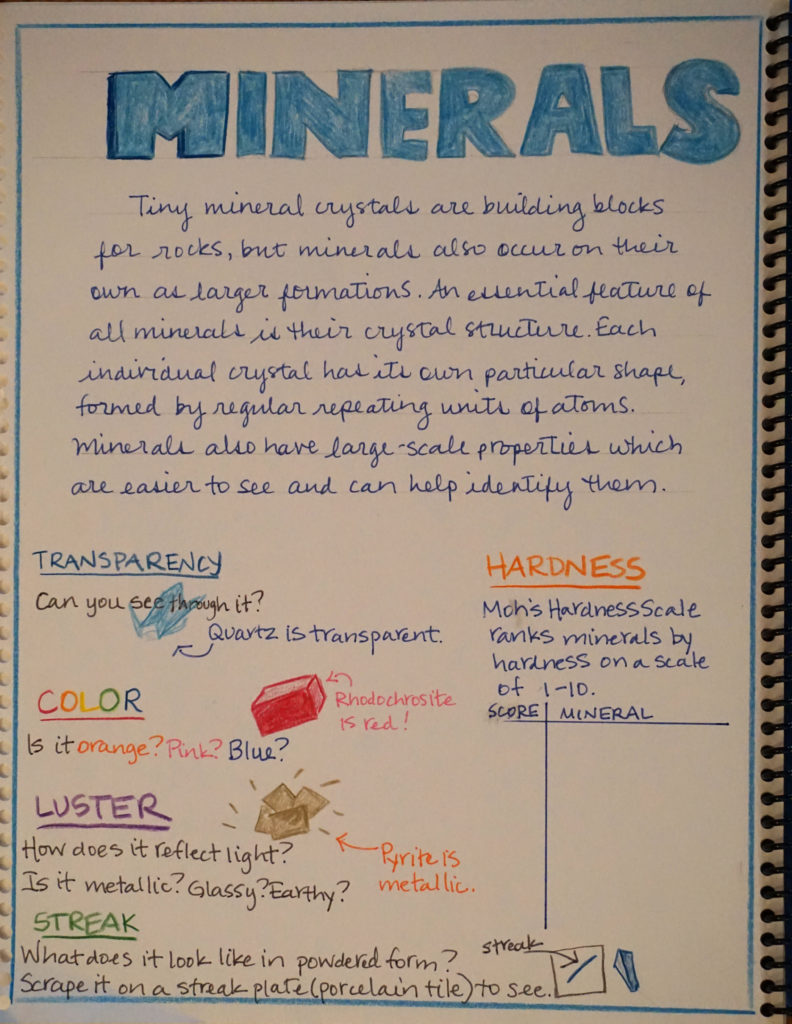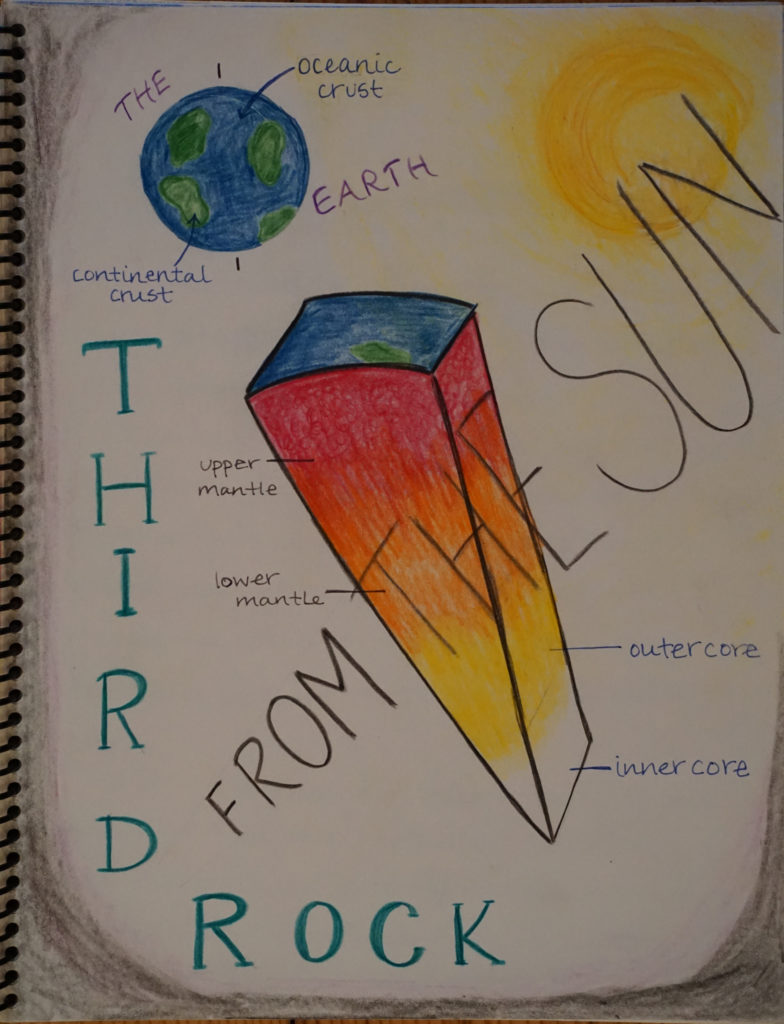You may have heard, I released my latest curriculum guide this week. This one is for the sixth grade Rocks and Minerals block and I’m really happy with it. I’ve taught this block three times now, so I had lots of resources and student samples to pull from and I’ve included lots of them in this guide.
As I was pulling the materials together it was nice to take a little walk down memory lane. Looking at the old notes in my lesson planner, I found myself transported back a couple of years ago when my 8th graders weren’t so big and our lessons were quite different than they are these days.
As I imagined those mornings, I thought it might be nice to share a little snapshot of a sample lesson with you. If you’ve never used my curriculum guides before, you’ll find this post to be pretty representative of the kind of information you get in those guides. If you find this lesson, in particular, useful, you might consider purchasing my full curriculum guide.
Opening
Our morning started at 8:15 with some sort of movement activity. Often we started off jumping rope or playing a game outside. After about 10 minutes we came inside and the students lined up at the door for the morning handshake.
After shaking the last hand, I began with a chorus of Jubilate Deo that was the students’ cue to stand ready for the verse. When they were ready we did an I-A-O verse to help them settle in and center. That year I wrote the I-A-O verse myself. “See me stand firm on the earth; in awe I look up to the stars; While the heavens watch over the stones.” Following this verse I said good morning to them and we spoke the upper grades morning verse.
After this we sometimes did some movement, concentration and rhythm activities that brought us together as a class followed by some artistic work (a song, recorder or poem.) During this block we worked with a rhythm song called All About Rocks that is included in my curriculum guide, as well as the Robert Frost poem Fire and Ice.
Students then returned to their desks and we did our daily almanac work (We tracked the sunrise and sunset times all through the year, as well as noting the weather and having brief discussions about them. Eventually we graphed all of this information.) Our daily dictation came next. My approach to dictation is also outlined in my guide and it is one of my favorite things from 5th and 6th grade.
After all of these we were warmed up and ready to start!
Review
Though these days I tend to start right off with the new content, in sixth grade I usually did the review first. This gave us a chance to take a look at the content from the day before and then build off of it as we launched into the new content. This sample lesson is of the second day of the block. On the first day we all went outside and found a rock. We came back in, made observations about our rocks and then drew them.
On the second day we talked about that activity and then we took out our rocks and participated in various exercises in organizing them. The class formed groups of 8 or 9 and each person brought their rock to the group. The group had to settle on a way of categorizing and organizing the rocks. Some groups did it according to color, others did it according to size. After they had done one way of organizing them, I had them sort them using different criteria (I remember some students were glad because they had another idea they really wanted to try.) After working in groups, we came together as a class and sorted all of the students’ rocks.
Next we reviewed the story of Abraham Werner I had told the day before and the students were assigned to write a composition about his story. They began this writing in class.

New Content
This content came in two parts, with some bookwork in-between to break it up.
I told the students the story of James Hutton. James Hutton was a Scottish doctor who heard about Abraham Werner’s theories but wasn’t convinced they were true. He was observant of the world and looked around at riverbeds and valleys and thought about how water shapes the earth. Hutton developed a theory that granite comes from volcanoes and thought that other rocks could be formed like volcanic rocks are formed, but deep inside the earth. Even more importantly, though, he made the big realization that what we see today is the key to understanding how the earth was formed.
Composition of the Earth: I had a diagram on the board of a cross-section of the earth. Using the diagram as a guide, I told the students about the different layers of the earth while they took notes. I described the earth as though we were taking a journey to the center.
Bookwork
Continue title page, begin composition of earth page.
End of Main Lesson
This is one example of the lessons I have put together in my Rocks and Minerals Curriculum Guide. I map out all of the content, give suggested resources, artistic ideas and sample assignments, block tests, summaries and main lesson pages. This is one of my most favorite blocks ever, so I’m really proud of this guide and I can’t wait for more teachers to use it and become as much of a rock nerd as I am!
Each part of the lesson takes us about half an hour, but I’m not too dogmatic about it.
The flow and structure of main lesson is one of my favorite topics. How do you set up your main lesson so it flows easily from one activity to another. Share in the comments.






Leave a Reply